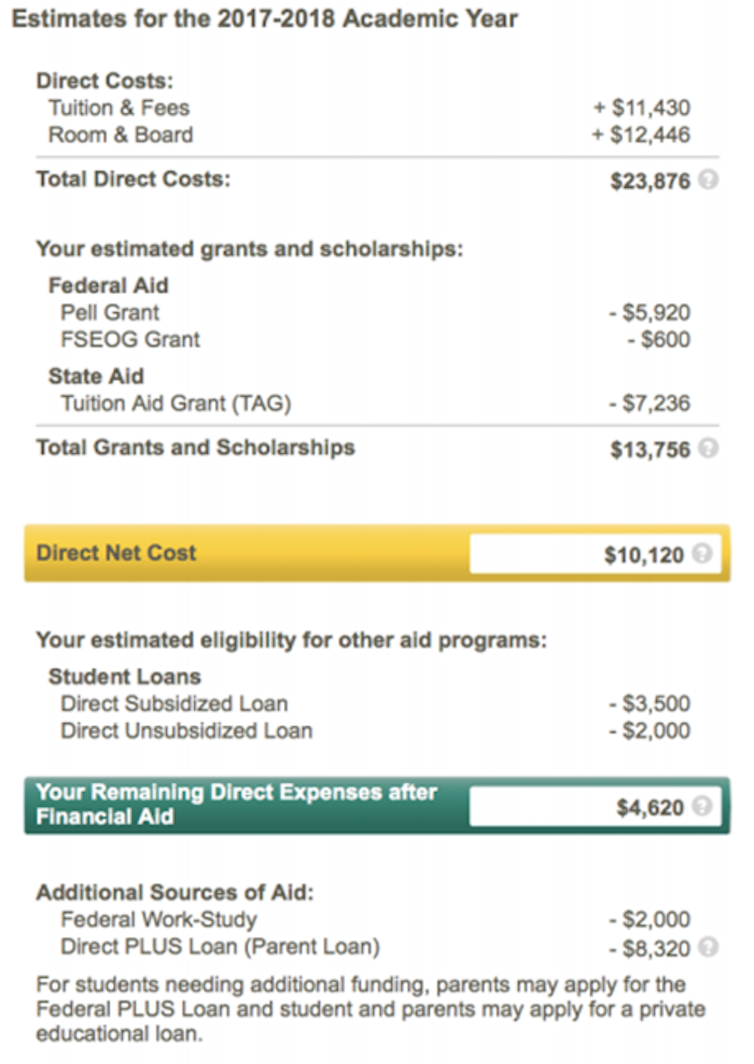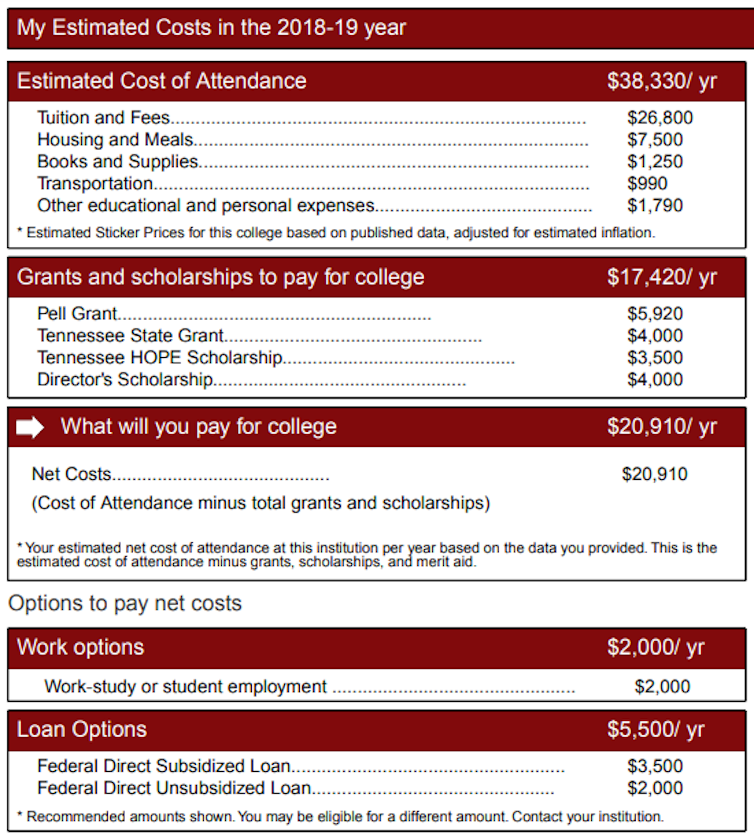Net price calculators were supposed to make it easier to understand the cost of college – instead, many are making it more difficult
- Written by Laura Perna, Professor of Higher Education, University of Pennsylvania
Ever since 2011[1], colleges that get federal student aid have been required to post net price calculators[2] on their websites. These calculators are supposed to help prospective students understand – before they apply – how much it will cost to attend a particular school.
But in a new study[3], we found that not all colleges and universities have a net price calculator that is easy to find or that consistently works. We were able to navigate from an institution’s home page to the net price calculator for 88 percent of the 80 institutions in our study. Despite repeated efforts, we were unable to find a net price calculator on the websites of two institutions. For five other institutions, the link to the calculator did not consistently work.
Perhaps more worrisome – we also found that at least a third of the colleges and universities in our study are presenting information in ways that may mislead students and families about what they should expect to pay if they attend a given school.
One of us is a scholar who studies how students decide to enroll in college[4], while the other looks at issues of college finance[5].
For this study, we examined the websites of 80 public and private not-for-profit four-year institutions where at least one out of every four students receives a Pell grant[6], which are grants for students with exceptional financial need. The schools in our study all are classified by Barron’s as having “competitive” admissions – they are not the nation’s “most,” “highly” or “very” competitive. “Competitive” institutions admit many but not all applicants, and include large state universities as well as private liberal arts colleges.
Cost distortion
Our study shows the persistence of problematic findings documented in an earlier study[7]. For example, despite repeated efforts, we were unable to find a net price calculator on the websites of two institutions. For five other institutions, the link to the calculator did not consistently work.
Among net price calculators that we could find and that did work, our study found no shortage of examples of misleading presentations of the expected cost of attendance. About 40 percent of the schools in our study provided estimates using data that were three or four years old, ignoring the reality that tuition and other costs typically increase each year. Some schools emphasized an out-of-pocket cost that includes only the costs of tuition and fees and room and board, even though going to college comes with other costs, including books. Other institutions showed that both grants and loans will reduce out of pocket costs without making it clear that – unlike grants – loans have to be paid back.
 Example of net price calculator output for institution emphasizing out-of-pocket costs after loans and ignoring indirect costs, such as books and personal expenses.
Example of net price calculator output for institution emphasizing out-of-pocket costs after loans and ignoring indirect costs, such as books and personal expenses.
The U.S. Department charges institutions with monitoring their own compliance[8] with the law. The lack of attention to compliance with the law – as well as the use of other misleading and confusing practices – can have important implications. Students who think a school costs too much, or that they won’t get enough grant aid, may end up bypassing schools they can actually afford. And students who underestimate how much it costs to go to a particular school may become get sidetracked if they enroll but end up not having the financial resources they need to pay the actual costs.
We don’t know if colleges and universities are using these misleading calculators on purpose or out of negligence. But whatever the case may be, colleges can make some simple changes to the net price calculators that will help prospective students more easily understand and compare cost estimates across colleges and universities.
Simple fixes
First, all colleges and universities should have a net price calculator that is easy to find and that consistently works. The output from the net price calculator should highlight only one net price. The highlighted net price should meet the federal government’s definition[9], which is cost of attendance minus grants and scholarships. It should also include all costs of attendance, and use data for the current or prior year. The net price calculator should specify the types of grants students may be eligible to receive – and tell students what they need to do to receive them. And it should make clear that, unlike grants, loans need to be repaid with interest. Providing students with estimates of the aid they may expect is the purpose of the net price calculator.
 Example NPC output that includes all cost, disaggregates aid and calculates one net price.
Example NPC output that includes all cost, disaggregates aid and calculates one net price.
To be useful to all students, net price calculators should provide estimates that reflect a student’s circumstances and choices. The estimates should be dynamic so that they can show the costs and aid for all kinds of students, such as those who are financially independent and are not U.S. citizens. The calculators should also tell students if costs vary based on major, residence hall or meal plan. Schools should also make it easy for students to get answers to their questions.
Federal policymakers should also take action to address these issues. Bipartisan legislation proposed March 27 by members of the U.S. House and Senate – formally known as the Net Price Calculator Improvement Act[10] – would take steps toward addressing problems found in this study.
Among other things, the proposed bill would require colleges to place their calculators on webpages “where students and families are likely to look for cost and admissions information.” It would also authorize the U.S. Department of Education to develop a “universal calculator” that would allow students “to answer one set of financial and academic questions” and receive a list of net prices that could be readily compared. It also implies the importance of understanding the best ways to communicate information about college costs to students from low-income families. More specifically, it would “require the Department of Education to submit a report on the steps the Department has taken to raise awareness of Net Price Calculators.”
References
- ^ since 2011 (nces.ed.gov)
- ^ net price calculators (nces.ed.gov)
- ^ new study (www.ahead-penn.org)
- ^ how students decide to enroll in college (scholar.google.com)
- ^ college finance (scholar.google.com)
- ^ Pell grant (studentaid.ed.gov)
- ^ an earlier study (ticas.org)
- ^ their own compliance (nces.ed.gov)
- ^ federal government’s definition (collegecost.ed.gov)
- ^ Net Price Calculator Improvement Act (cummings.house.gov)
Authors: Laura Perna, Professor of Higher Education, University of Pennsylvania

